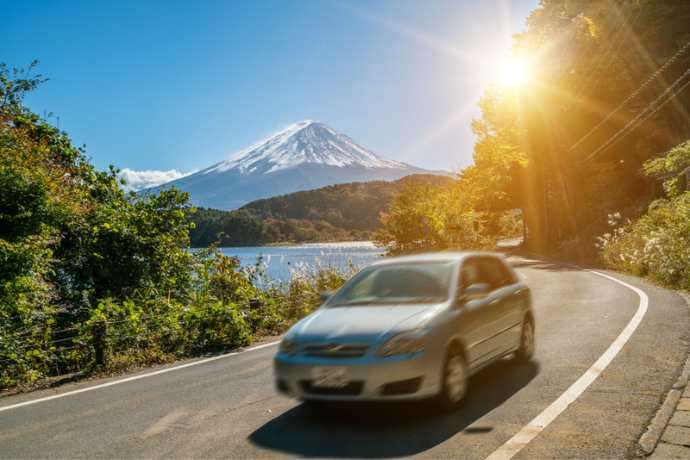You are driving on an ordinary road and suddenly notice a green sign among all the ordinary blue ones. That is the entrance to the smoothest Japanese driving experience you will ever have: Japanese highways.
Japanese highways
Expressways in Japan are much easier to use than ordinary roads. You never risk meeting another vehicle, and there are never any traffic lights that force you to stop. The Japanese highway system is kept in great condition by Nexco, the company that manages Japan highways.
This guide will cover what you need to know to use Japanese expressways, including how to leave and enter – and how to pay the toll. It will also help you with the speed limit, overtaking and the written and unwritten rules for driving on Japanese roads, as well as how to drive when the weather turns bad. This article also covers how to find parking and service areas if you need a break.
- Easy comparison of multiple car rental provider options using ToCoo!
- Use coupon code K49O12 to get your 1,000 yen discount
- ToCoo! is a local Japanese car comparison site that has the most options available
- Clear description of included protection and excess
- Good cancellation options
- Child seats, GPS, electronic toll cards, second driver and more are available as add-ons
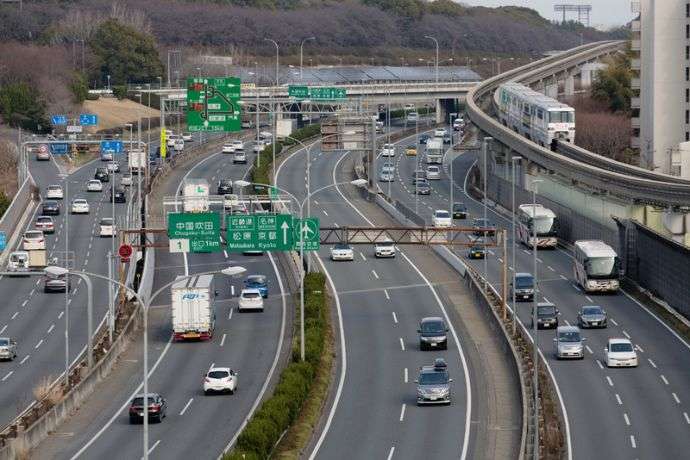
Japanese Highways – Words to Know
Japan toll roads, at least expressways, are easy to get around once you know what you are looking for – and know what you are looking for in Japanese. Some English words do not quite mean the same thing as they do in England or America either.
- Expressway: A dedicated toll road in Japan going at high speed to specific places, attached to the ordinary Japan road network.
- Highway: Synonym for expressway.
- Freeway: Synonym for expressway.
- Motorway: Synonym for expressway.
- Japanese autobahn: Synonym for expressway.
- Service area サービエリア or ‘SA’: A place near the highway in Japan (but still part of the toll road), where you can park, eat, shop for special items and everyday things, and use restrooms.
- Parking area パーキンっグエーリア or ‘P’: A spot near the highway in Japan where you can park, use restrooms, and has simple facilities for travellers.
- Entrance 入口 (iriguchi): Where you enter the expressway, parking area, or service area.
- Exit 出口 (deguchi): Where you leave the expressway, parking area, or service area.
- Toll gate 料金所 (ryokinjo): Collection point for the Japan road toll.
- ETC: ETC is short for Electronic Toll Collection, a way to pay tolls using an IC (chip) card and a secure wireless connection.
- ETC Card: An IC card is used to pay tolls and can also be connected to a user’s credit card for other payments.
- ETC Gate (Smart IC or スマートIC): A special toll gate on Japanese expressways that works automatically when a car with an ETC card gets close.
- Single vehicle lane (一船): Manual toll gate.
- Interchange (IC): A place where you can exit the highway and go back to regular Japanese roads.
- Junction (JCT): A spot where two or more Japanese expressways cross each other, letting you switch from one to another. There’s usually a toll gate in between.
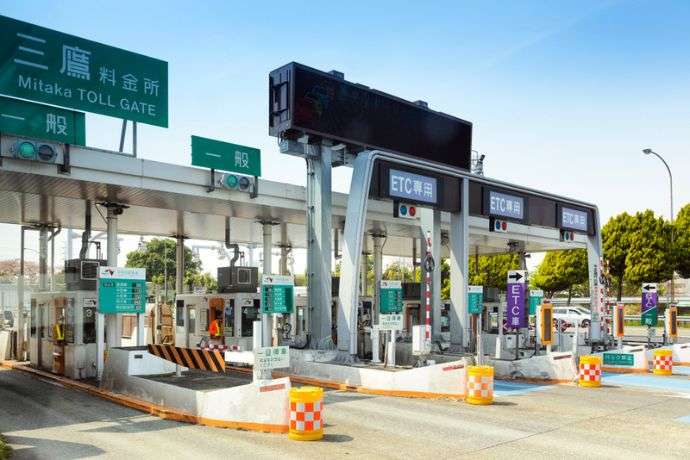
Highways vs Expressways vs Toll Roads
Japan has a large network of expressways all over the country, paid for by tolls. There are a few Japanese toll roads that aren’t highways, but they’re not very common.
In Japan, there are some big public roads that might be called highways in other countries. But on these roads, the top speed is usually 80 km per hour (often 60), and there are many traffic lights where roads meet. When people in Japan talk about “freeways” or “highways,” they’re talking about Japanese expressways.
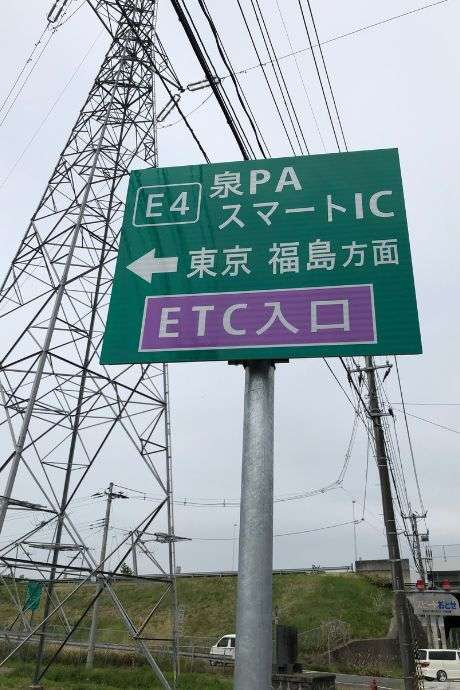
Entering and exiting Japanese highways
Japanese highways are toll roads, so you pay a set amount to get on the road and then more based on how far you go. You can pay for your Japan road usage with cash (or a credit card) or by using an automatic payment system.
The ETC Japan highway system is a system that works for Japan road toll payments anywhere in the country. In Japan, there’s a nationwide Japan expressway pass that lets you use Japan expressways as much as you want for up to 14 days by paying a set amount.
Some areas also have a Japan road toll pass that gives tourists a discount when using the expressways in that part of Japan, like Tohoku.
Before you enter the Japanese toll roads, you can use a Japan road toll calculator to see how much you will pay. You can find a calculator on the Nexco website or use Google Maps, which has a built-in tool to figure out how much you’ll need to pay for using Japan’s toll roads.
If you do not use an ETC card, paying with cash is the best option.
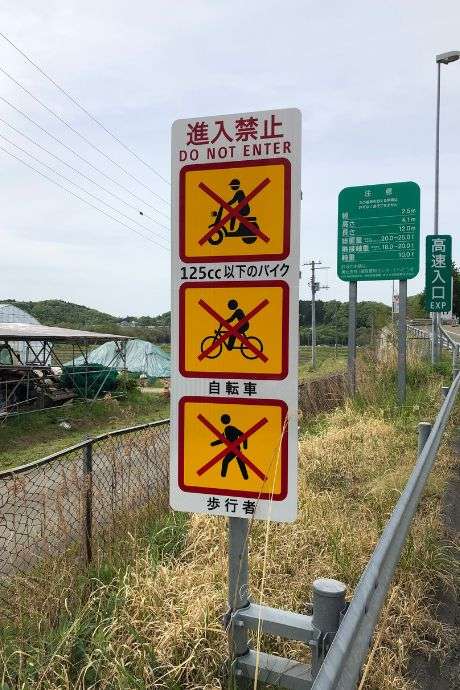
Interchanges
The main exits and entrances to the Japanese highways are the interchanges. In Japan, there is an interchange on average every 10 km.
Usually, the interchanges have a similar layout: an entrance road that goes to the tollgates, a curved road that takes you to the acceleration lane where you can go from 40 km per hour on the access road (that’s why it’s curved) to 80 km per hour, which is the speed cars drive on the highway.
At the interchanges, the tollgates can be automatic or manual. There’s a sign that says “ETC” for the automatic gate where you use your Japanese expressway pass, or “一船” for the manual gates. Normally, the manual gate sign is green, and the automatic gate sign is light purple. There’s also a blue mark on the ground showing you where to go for the automatic gates.
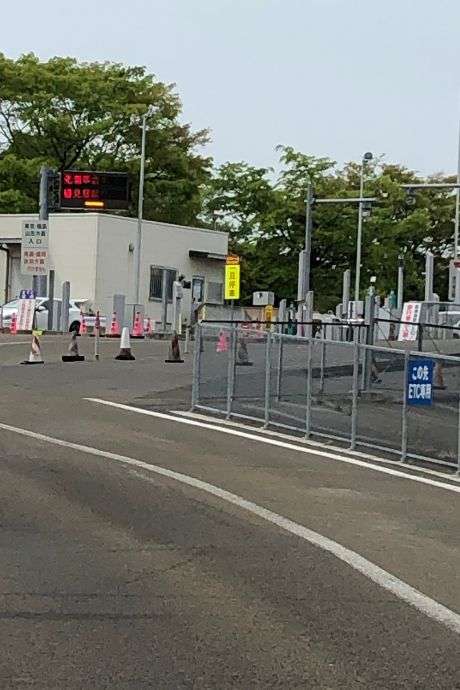
Automated entrances
At many smaller Japan highway entrances, especially ones connected to parking areas, you can enter or exit the highway using your Japan expressway pass. Just make sure you go in on the side of the road where traffic is moving in the same direction you want to go.
At these entrances, there’s no attendant. The automatic gate takes care of both the payment and letting cars in (and out). Drive up to the barrier slowly (the maximum speed allowed when passing is 20 km per hour). As you approach, the barriers will open, and the ETC card will be debited wirelessly. Follow the arrows to the freeway entrance, speed up, and enter traffic.
Exiting highways
The Japan highway toll is a set amount plus the cost for the distance you travel. So, you need to show where you entered the expressway. The ETC system records the Japan highway toll on your Japan toll road pass.
If you use a manual gate, you’ll get a ticket that you must keep until you leave. When you give the ticket to the person at the exit gate, they will use it to figure out how much you need to pay for the Japan road toll.
Before you leave, make sure to move into the exit lane (usually the one farthest to the left) and signal at a good distance from the turn. Don’t slow down until right before you’re about to turn. Since this is usually a shallow turn, you may have to turn off the turn signal as you slow down.
Driving on a Japan highway
Driving on a Japanese expressway is very smooth. Unlike regular Japanese roads, your car doesn’t get in the way of other cars (unless you’re passing them), and there’s no chance of running into people walking, bikes, or anything else that might interrupt your smooth drive.
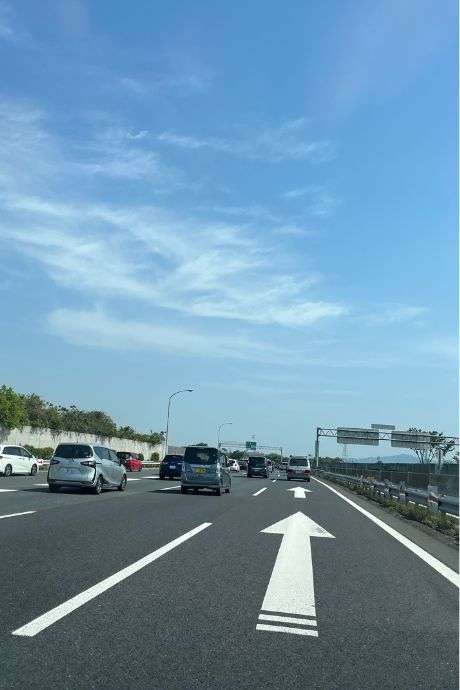
Speed limits
The top speed on Japanese highways is much faster than on normal roads. Usually, the expressway speed limit is 80 kilometres (50 miles) per hour, but there are some newer parts where you can go up to 120 km (75 miles) per hour. Most of the time, cars drive at 100 km (62 miles) per hour, no matter what the official speed limit is.
It is also different for small cars and trucks, where the trucks often have a lower speed limit. Not that truck drivers always follow that. A lot depends on the trucking company the drivers work for. Some companies want their drivers to follow the speed limit and always drive safely. Other companies don’t have strict rules for their drivers, so sometimes a truck might pass you even if you’re driving 100 km per hour or more. This can be a pretty scary experience.
Figuring out how fast you can drive is trickier than it seems. Police use radar guns and laser speed meters, and there are speed cameras all over the Japanese expressways. But no matter how fast you go, it’s hard to pass the motorcycle police.

Overtaking
You usually drive at 80 km per hour on the highways in Japan, or 120 where it’s allowed (if the weather is good).
You can go faster when passing someone but don’t stay in the fast lane. That lane is for overtaking, not just going fast. Eventually, a faster car might want to pass you. There are many fancy cars like Lamborghinis, Porsches, Ferraris, and even some Koenigseggs in Japan, so it’s unlikely you can keep up with them, no matter how hard you push your car.
When passing on Japanese highways, move into the overtaking lane (if there are no other cars) and speed up to pass the slower car. It might be a good idea to stay in the overtaking lane until you’ve passed any big trucks, especially tank trucks that drive carefully at 80 km per hour because they’re carrying dangerous loads.
A lot of times, the car you want to pass is a ‘kei’ car, which is common in Japanese farms and suburbia. Kei cars have weaker engines than regular cars (not much stronger than a motorcycle engine), and they used to only go up to 80 km per hour.
Now, because of better technology, they can go faster, but some drivers (especially older ones) might not feel comfortable going over 80. So, when you need to pass them, speed up enough and go ahead. You might be driving 100 on an 80-road for a short time, but it’s okay.
But remember, even if you are driving at a good clip, you should not stay in the overtaking lane. When the speed limit is 100, do not push 120 for more than a few minutes. Go back to the regular lane as soon as it is clear. And mind the weather when you are driving faster than the speed limit. If it is raining, you may want to wait to overtake.
Safe highway behaviour and etiquette
On Japanese highways, like on all other roads in Japan, there’s a very important rule: You should always help traffic flow smoothly. This means driving at the same speed as others.
Also, watch out for motorcycles. Riding motorcycles on Japanese expressways is popular, especially in the summer, and they can be very fast. Sometimes, they might do risky things like cutting in front of cars. When you’re driving at 100 km per hour, you can’t quickly stop to avoid them. It’s better to keep an eye on them and stay safe.
I already talked about trucks, which either drive at the speed limit or much faster. Even though the drivers know what they’re doing, it’s not fun when a speeding truck passes you on the inside lane. This is especially true if you’re in a three-lane area and another truck is already passing you on the outside.
Try to keep a good distance – at least 50 meters or more – from the car in front of you. There are signs every 50 meters in places where you may want to check your distance, so use them to adjust how far you are from other cars.
Driving smoothly and being aware of other drivers are the main rules for safety on highways. Also, make sure you know when you need to turn and get into the left lane early. This is much safer than quickly changing lanes to catch an exit.
Plan your driving ahead of time. A car navigation system is helpful because it shows junctions, intersections, service areas, and parking spots.

What to Watch Out For
When driving on expressways, some of the things to watch out for are rain, snow, fog and animals.
Rain
Whenever you’re driving in Japan, it’s important to be aware of the weather. During the rainy season and in summer, thunderstorms and heavy rain can happen, making it literally impossible to see the car in front of you. This is just normal weather.
During typhoons, it’s best not to drive at all. The wind can be so strong that it could lift a small car off a bridge. Typhoons also bring lots of rain, but the wind is the biggest danger.
There can be dangerously strong winds at other times too, and you’ll often see windsocks near bridges. If the windsocks are straight out, it’s a good idea to stop at a service area and wait for the bad weather to pass.
Snow
Rain isn’t the only thing that can cause problems on Japanese expressways. In winter, especially early winter, snow can be an issue. In places like Niigata, Nagano, Akita, and Hokkaido, there can be several meters of snow. Sometimes, most of it falls overnight, making driving difficult. Drivers in those areas are used to snow and know that they have to change to snow tires.
In areas around Tokyo, which is further south, snow isn’t usually a big concern for planning your route. Since people don’t expect snow in the Tokyo area, they’re often unprepared, and many don’t even have snow tires.
On highways, traffic can slow down for hours due to slippery roads and poor visibility. However, driving on expressways is easier than on smaller roads because the traffic helps clear the snow. But sometimes, sudden heavy snowfall can cause complete traffic jams, lasting for days in some cases.
Fog
Both winter and summer have their own weather challenges on Japanese freeways, but spring and fall bring another kind of difficult weather: fog. In the mountains, fog can be so thick that it’s almost impossible to see anything in front of your car, even just a few meters ahead. It might disperse as the day wears on but might linger. In that case, traffic will slow down to an extreme crawl as drivers try not to bump into each other.
Animals
At dusk and dawn, you also need to watch out for something else, especially if you are driving in forests, where most of the Japanese expressways run through.
There are plenty of wild animals in Japan, despite the country being so populated. In Hokkaido, they can be dangerous, but in most of the country, they will just be a nuisance. But, they are a nuisance that can cause traffic accidents and damage to your car if you do not watch out. And it is never pleasant to cause the death of an innocent animal.
Japanese highways usually have fences, so it’s rare for big animals like bears and deer to get on them. Most animal accidents on these roads involve smaller, clever animals like monkeys, tanuki (Japanese badgers), and wild boars. It’s a good idea to watch the left side of the road to make sure no animals suddenly run out of the woods and end up under your car.
Parking and Service Areas
On Japanese expressways, there are parking areas where drivers can stop, take a break, and use the restroom. In such areas, the facilities are basic, and they don’t have shops or restaurants. Usually, you’ll find one every 15 km.
Parking areas on expressways are mixed with service areas, which have shops, restaurants, expensive gas stations, and restrooms. They’re typically 50 km apart. There might also be a dog run for people travelling with pets.
Service areas often have a dining section with everyday food like soba and ramen, including local specialties. In popular areas, this can lead to long lines – for example, the famous Sanno service area is known for its ramen, and the line can be several kilometres long during holidays.
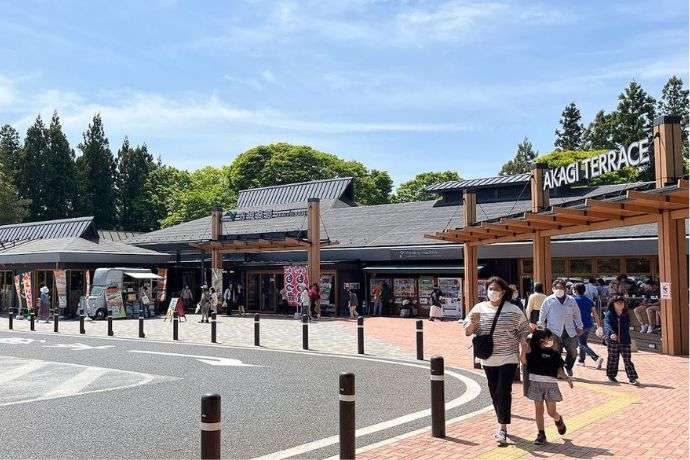
Many service areas also have fancier restaurants with nicer dishes. You might also find a cafe, sometimes run by Starbucks or another high-end coffee chain. Occasionally, there’s a convenience store operated by big chains like Lawson, 7-11, or Family Mart.
Top Tips for Driving on Japanese Highways
During holidays and for personal vehicles, the fees on expressways are often cheaper. So, if you’re travelling in a group of more than five people, it might be less expensive than taking the Shinkansen for the same distance. Don’t forget to consider the cost of gas in your calculations. Our guide to Japanese gas stations will help you learn more about filling up your car in Japan.
Japan has a rough grid of north-south and east-west expressways, but the routes can change quite a bit because of the landscape. You might think that driving through the mountains would be scenic, but most of the time, the expressways go through tunnels, which can be boring.
Smaller country roads in Japan are more picturesque but take much longer to travel on compared to expressways.
Nexco vehicles (from the company that manages Japanese highways) patrol the freeways to check for accidents and help drivers who need assistance.

- Easy comparison of multiple car rental provider options using ToCoo!
- Use coupon code K49O12 to get your 1,000 yen discount
- ToCoo! is a local Japanese car comparison site that has the most options available
- Clear description of included protection and excess
- Good cancellation options
- Child seats, GPS, electronic toll cards, second driver and more are available as add-ons
Frequently Asked Questions about Japanese Highways
Final Thoughts
Mastering driving on highways is essential for any international traveller looking to explore Japan by road. By understanding the expressway system, speed limits, overtaking rules, and tackling adverse weather conditions, you’ll not only ensure a safe journey but also enhance your overall travel experience.
With proper knowledge and preparation, you’ll be able to confidently navigate Japan’s highways and uncover hidden gems scattered throughout this beautiful country.
So, buckle up and start including road trips to your Japan itinerary! And once you’ve conquered the expressways, don’t forget to check out our other informative articles to help you navigate Japan like a pro. Safe travels, and happy exploring!
For more information on Japanese highways, check out the Nexco drive plaza website (with information in English):
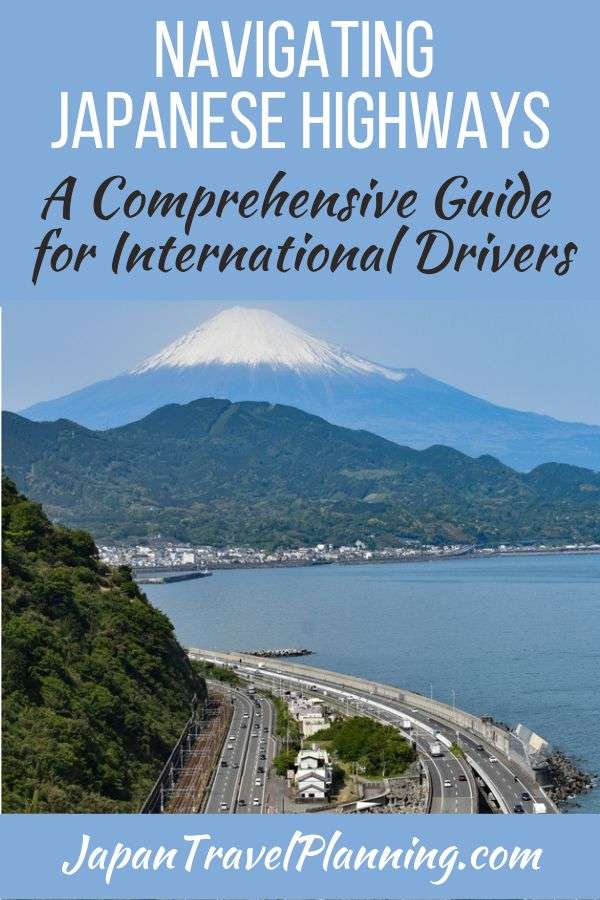
Join the Japan Travel Planning Facebook Group or Discord Server
You are also welcome to join our Japan Travel Planning Facebook Group and our Japan Travel Planning Discord Server – they are great resources to enable you to ask questions about your upcoming trip to Japan!
Disclaimer: This article contains affiliate links. If you book after clicking on one of these links then we may receive a small commission at no extra cost to you.

